|
John Tyman's Cultures in Context Series EGYPT and the SAHARA www.johntyman.com/sahara |
|
7.1 Ain Khudra and Tourism Pt. I : 509-529 |
| . |
|
John Tyman's Cultures in Context Series EGYPT and the SAHARA www.johntyman.com/sahara |
|
7.1 Ain Khudra and Tourism Pt. I : 509-529 |
| . |
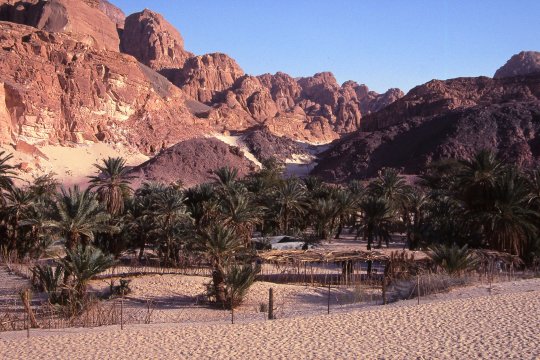 |
| .512. The village lies in a dry river channel (or wadi), where little rain falls, but where water is naturally available beneath the surface. |
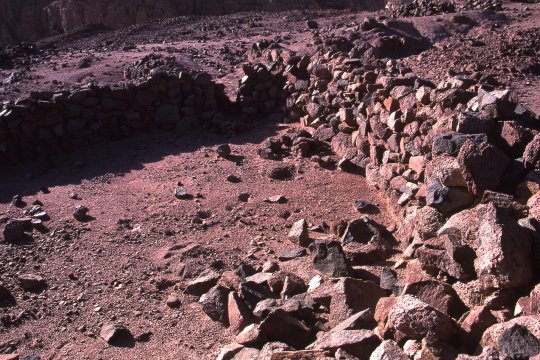 |
| .513. Sheep were grazed here traditionally over rock-strewn pastures on the surrounding hills, which are still marked by stone sheepfolds where animals could be penned up at night. |
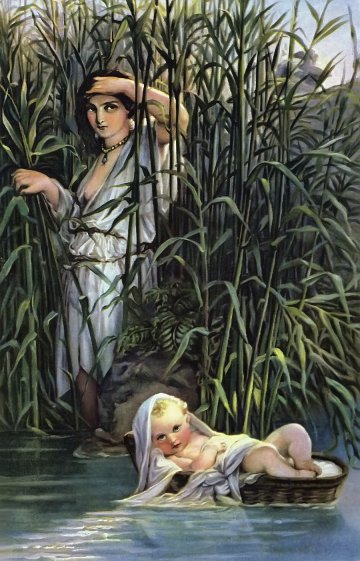 |
| .515. Since the Bedouin believe themselves to be descended from Ishmael, son of Abraham, they are not only allied racially to the Jews, as Semitic people, but also have histories that are inter-twined. And Miriam is celebrated in Islam as an important member of the generation of Moses. (Painting of Miriam with “Moses in the Bulrushes” by Paul Delaroche, at Wikipedia) |
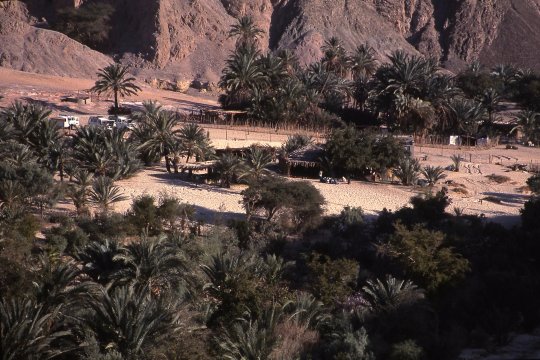 |
| .518. Four families now live here year-round, -- or 30 people in total. A few more families work at resorts on the Red Sea coast and spend their holidays here in the desert. |
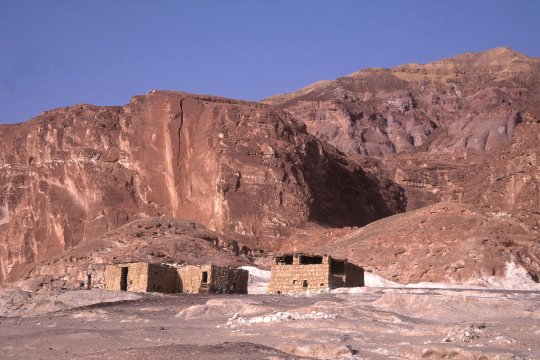 |
| .519. Most of Ain Khudra’s inhabitants now own houses built of local stone. These are more secure but less suited to the climate. |
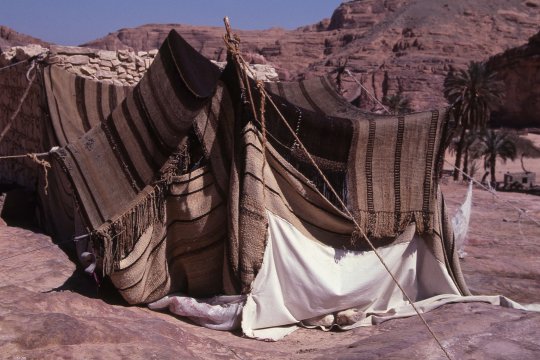 |
| .520. For old time’s sake, though, many men have hung on to their tents and pitched then alongside their new homes. |
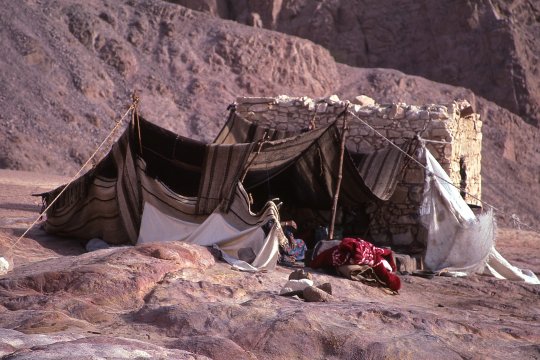 |
| .521. And some even live in tents and use their stone houses for storage and/or to keep their youngest animals safe at night. |
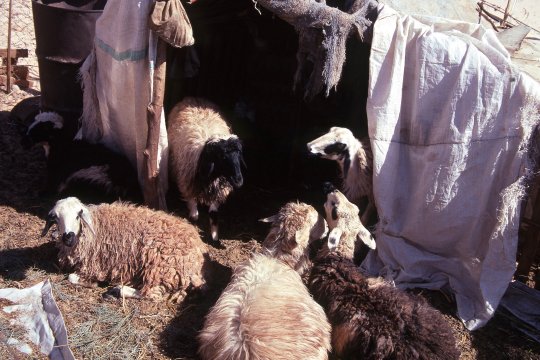 |
| .523. The folk who live here now keep a few sheep and goats -- all of which scavenge for food and are also fed kitchen scraps. |
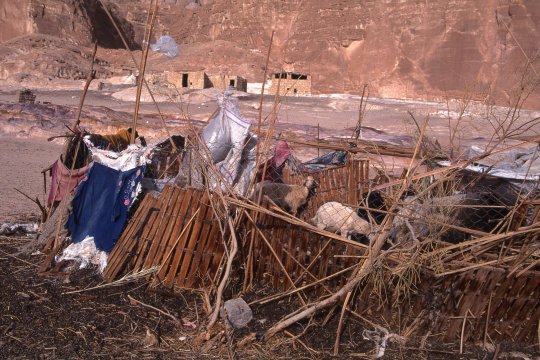 |
| .524. At night they are locked up in improvised pens made from the kinds of odds and ends which accumulate in permanent settlements. |
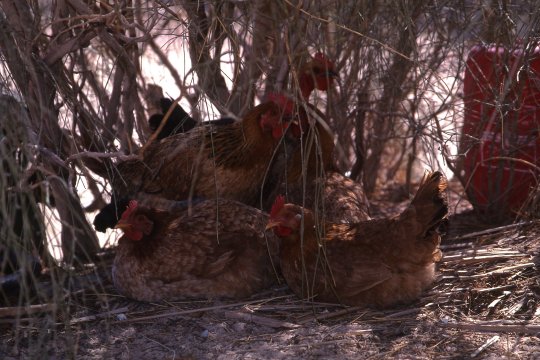 |
| .525. Their chickens, which feed mostly on garden waste, look for shade during the heat of the day. |
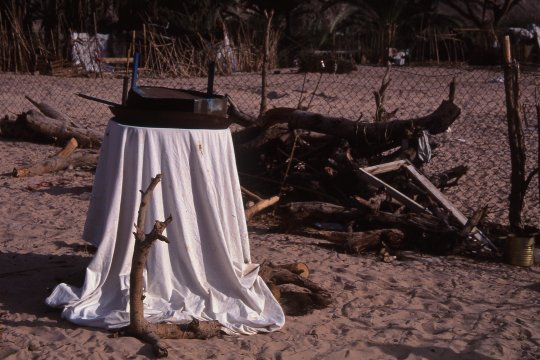 |
| .526. At night these same birds are kept safe from foxes and raptors in this old oil drum. |
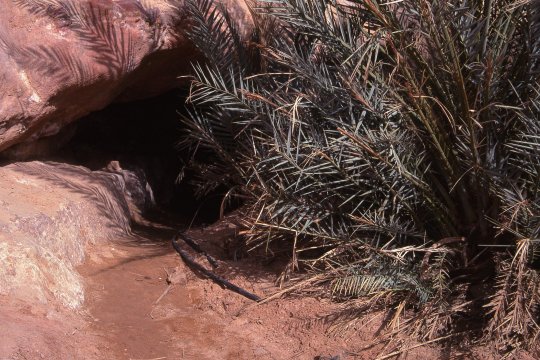 |
| .527. Today, water from Miriam's spring is actually drawn off in plastic pipes to irrigate the gardens of what has in effect become a small oasis. |
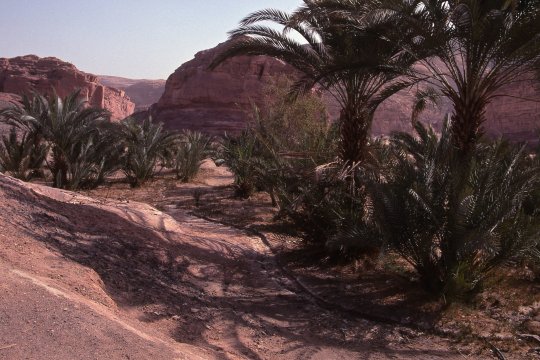 |
| .528. Some of this water is used to supplement the moisture supply which the date palms had previously obtained naturally through their roots. |
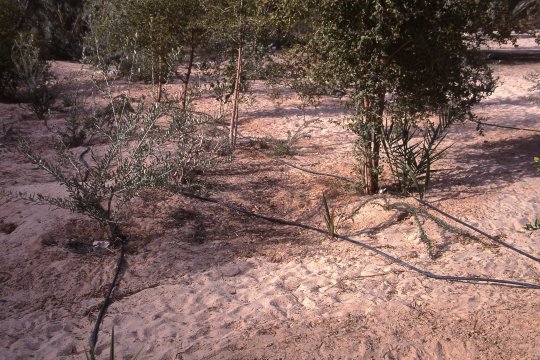 |
| .529. They have some fruit trees here too now, most of them olives. |
![]()
Text and photos by John Tyman
unless otherwise indicated.
Intended for Educational Use
Only.
Contact Dr. John Tyman at johntyman2@gmail.com
for more information regarding
licensing.
![]()
www.hillmanweb.com
Photo processing, Web page layout,
formatting and hosting by
William
Hillman ~ Brandon, Manitoba ~ Canada